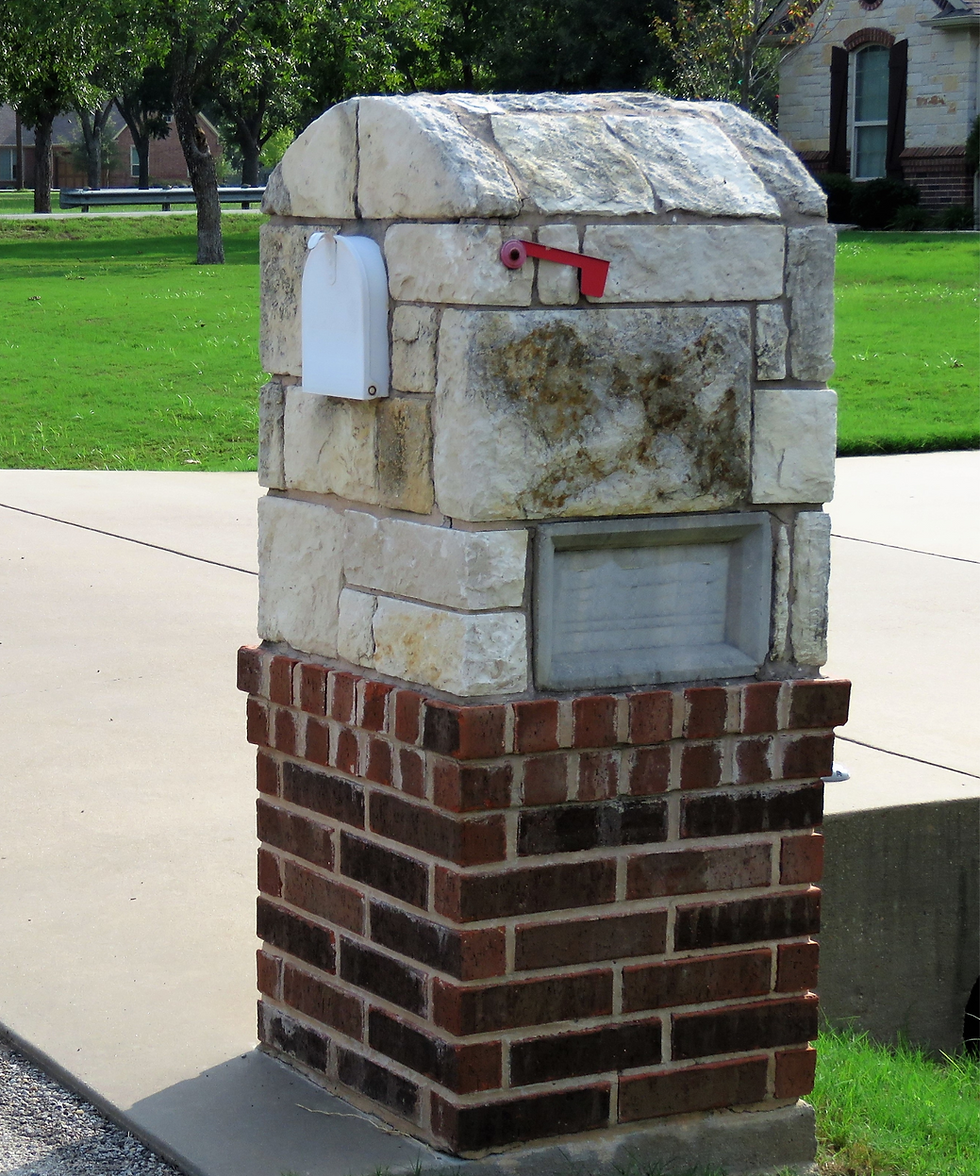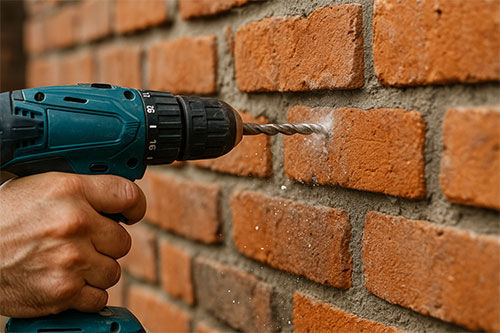The Brick Repair Guide: Fixing Brickwork & Mortar Repair
- srcustommasonry
- Jul 23
- 6 min read

Fixing brickwork might not be the most exciting task and honestly might be a bit intimidating. But ignoring cracks in brick or mortar can certainly cost you down the road. What starts small can slowly turn into a bigger headache if left alone. However, if you catch these issues early, you can often handle the brickwork repairs yourself. It saves money and keeps your home in good shape. It’s not as difficult as you might think. Keep reading and we’ll walk you through the repair process and help you know when the job might be more than you can tackle on your own.
Why You Need To Repair Brick and Brick Mortar
Repairing brick and brick mortar keeps your home strong, weather-resistant, and visually appealing. Cracks and gaps allow water to seep in, leading to mold, rot, or structural weakening. Regular upkeep also helps protect your investment and keeps your home looking its best for years to come.
How To Repair Brick Mortar
Repairing brick mortar, also known as tuckpointing or repointing, is a hands-on job but very doable for many homeowners. The key is taking your time and doing it right so the repair lasts and blends in with the existing brickwork.
1. Use a hammer and cold chisel or an angle grinder to carefully remove the damaged mortar. Go about half an inch deep.
2. Clean out the joints with a brush and spray lightly with water to help the new mortar stick.
3. Mix your mortar until it’s thick but spreadable, like peanut butter.
4. Use a pointing trowel to press mortar into the joints. Work in small sections.
5. Once the mortar starts to firm up, smooth it out with a jointer tool to match nearby joints.
6. After it fully dries, gently brush off any leftover dust or bits.
How To Repair Bricks
Repairing bricks is a bit different from fixing mortar. If bricks are cracked, chipped, or loose, they may need to be replaced entirely. The process involves carefully removing the damaged brick without disturbing the surrounding ones, then setting a new brick in place with fresh mortar. It takes a little patience but can make a big difference in the look and strength of your wall.
Here’s how to repair damaged bricks:
● Use a chisel and hammer to break out the damaged brick
● Clear out old mortar and clean the cavity
● Lightly dampen the area with water
● Apply fresh mortar to the sides and bottom of the cavity
● Press the new brick into place and align it with surrounding bricks
● Fill in the joints around the brick with mortar
● Smooth the joints and let everything dry fully
Tools Needed
● Cold chisel
● Hammer
● Pointing trowel
● Mortar mix
● Mixing bucket
● Stiff brush
● Jointer or striking tool
● Spray bottle or hose (for light misting)
● Safety glasses
● Work gloves
● Dust mask
● Margin trowel or small putty knife (optional for tight spots)
Signs You Need To Repair Brick
● Uneven Gaps- One early sign that brickwork needs attention is when you notice uneven gaps forming in the mortar lines. The bricks might still look fine, but if those gaps start to widen or look uneven, it's a signal that the joints are weakening. Ignoring this can eventually lead to bricks shifting out of place.
● Water Stains- Another thing to watch for is water stains on interior walls near brick surfaces. This often means moisture is finding its way through damaged mortar or small cracks in the brick. Even a small leak can cause bigger problems over time, especially in hidden areas.
● New Mortar Cracks- If you’ve recently done repairs and already see new mortar between bricks cracking, that’s a red flag. It could mean the wrong mortar was used, or that deeper issues weren’t fixed. Either way, it is worth revisiting before things get worse.
Signs You Need To Repair Brick Mortar
● Cracking Between Bricks- Cracking or crumbling between the bricks is one of the first signs your mortar needs repair. If you run your hand along the joints and the mortar flakes off or feels sandy, it’s likely breaking down from age or weather. Once mortar starts to weaken, it loses the ability to hold the bricks in place properly.
● Mortar Pulling Away- Another clear sign is when the mortar starts to pull away from the edges of the bricks. You might see thin lines or gaps where it used to meet flush. This makes the wall more vulnerable to moisture, which only speeds up the damage.
● Hollow Sounding Wall- You may also notice parts of the wall sounding hollow when tapped. That often means the mortar behind the bricks has deteriorated, even if the surface still looks fine. Fixing the mortar before the bricks become loose helps avoid bigger repairs later and keeps your wall strong and weather-tight.
What Causes Brick Damage?
Brick damage usually starts with moisture. Water sneaks into small cracks or gaps in the mortar and freezes when temperatures drop. That freezing water expands, which causes bricks or mortar to crack and crumble. Over time, this cycle of freezing and thawing can break down even solid brickwork.
Another common cause is poor drainage around the home. If water pools near the base of your walls, it can slowly seep in and wear down the foundation and lower bricks. Add in some shifting soil or settling, and things can start to crack or separate. Even pressure from tree roots nearby can lead to movement and damage.
Lastly, age plays a role. Brickwork naturally wears down over decades, especially when exposed to the elements without regular maintenance. UV rays, heat, wind, and pollutants can slowly eat away at both brick and mortar. That is why fixing brickwork early matters so much.
When Do You Need To Call A Brick Mason To Repair
Sometimes brickwork damage goes beyond what you can or should handle on your own. One clear sign you need a brick mason is when large sections of the wall are bulging, leaning, or shifting. That kind of movement usually means there’s a bigger structural issue, not just a surface problem. A professional can figure out if the foundation is to blame or if something else is causing the shift.
You should also call a brick mason if you notice bricks that are loose or falling out altogether. If several bricks are missing or moving when touched, it’s no longer just a mortar issue. That kind of repair needs more than basic tools and know-how. A mason can safely take apart the damaged area and rebuild it correctly.
Heavy staining or white powder (called efflorescence) on the surface could also point to ongoing water issues inside the wall. If the problem keeps coming back no matter what you try, it’s probably time to let a pro take a deeper look. Getting expert help early can prevent even bigger damage down the line and make sure your repairs hold up for years.
When You Can Put New Mortar Over Old Mortar
You can put new mortar over old mortar if the existing joints are mostly solid and just need surface touch-ups. The key is proper prep. Clean out any loose or crumbling pieces first, and brush away dust. The old mortar should be slightly damp before applying the new mix. This helps it stick better. If the damage is deep or widespread, it’s usually best to remove more of the old mortar before refilling. A quick surface patch only works when the base is still strong.
Cement vs Mortar
When fixing brickwork, it's important to know the difference between cement and mortar. Cement is a binding ingredient, not a filler. Mortar, on the other hand, is made to bond bricks together and fill gaps between them. It’s softer and more flexible than straight cement, which makes it better for brick repairs. Using cement instead of mortar can actually cause more
cracking over time. So when you're filling in joints or patching spots, always go with the right type of mortar for the job.
The Brick Repair Guide Conclusion
Brickwork doesn’t need to be perfect to last, but it does need a little attention now and then. Knowing how to spot trouble and handle small fixes can make a big difference in how your home looks and holds up. And when the job gets too big or you’re ready for something new, we’ve got you covered. At S&R Masonry, we’ve been working with homeowners and businesses throughout the Salt Lake City area for years. Whether it’s repairing a brick wall or remodeling with fresh brickwork, our team knows how to get it done right.





Comments